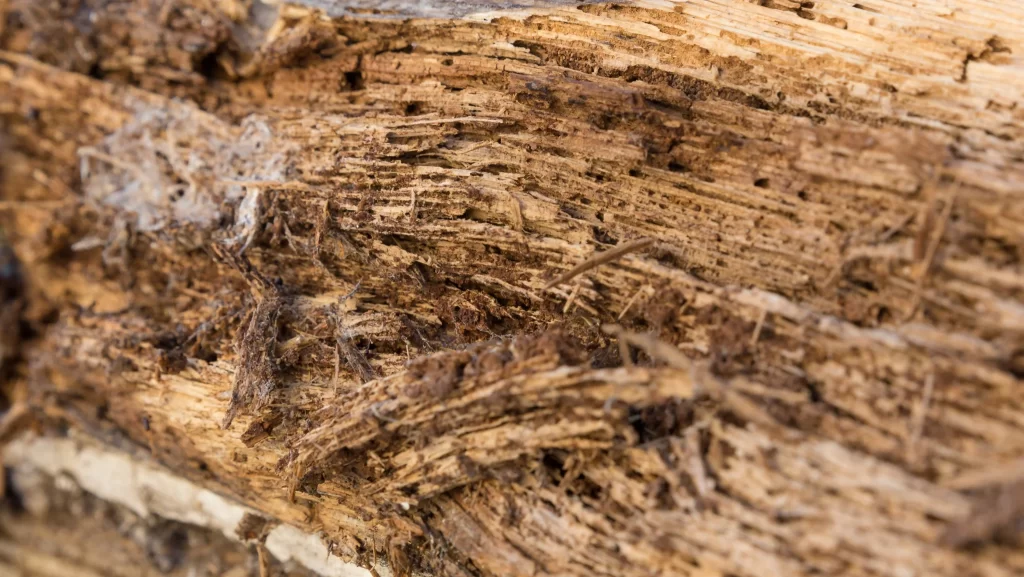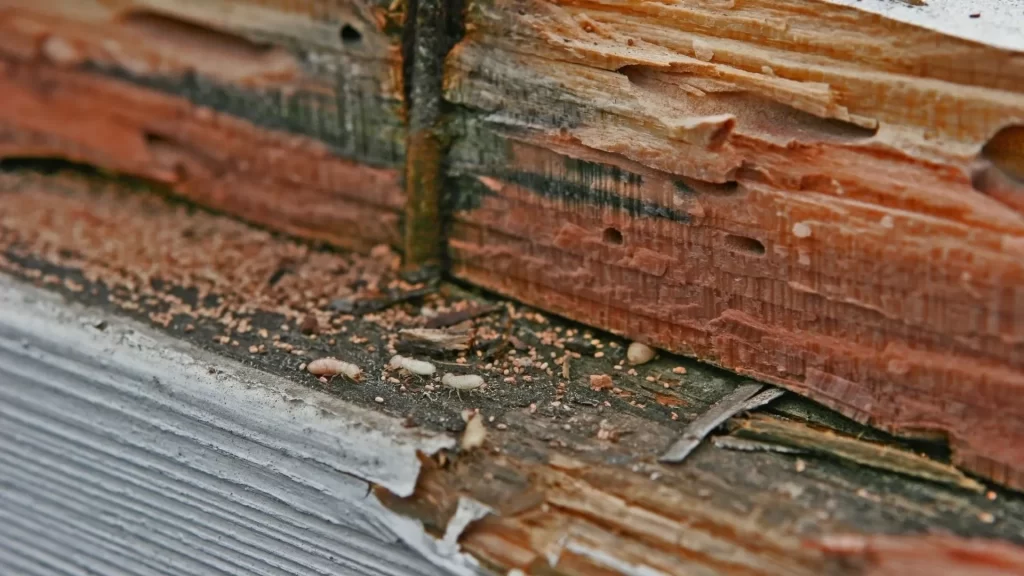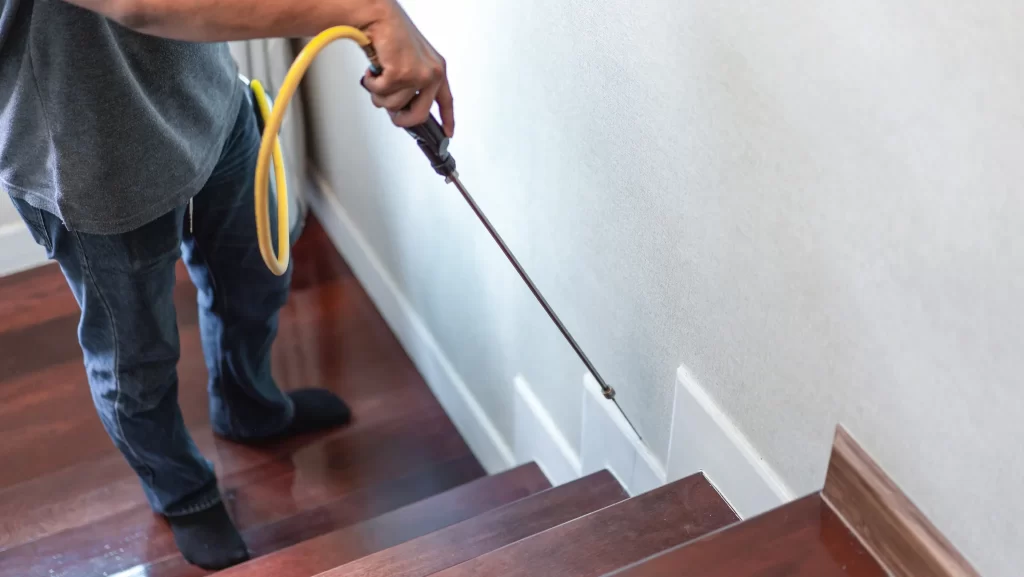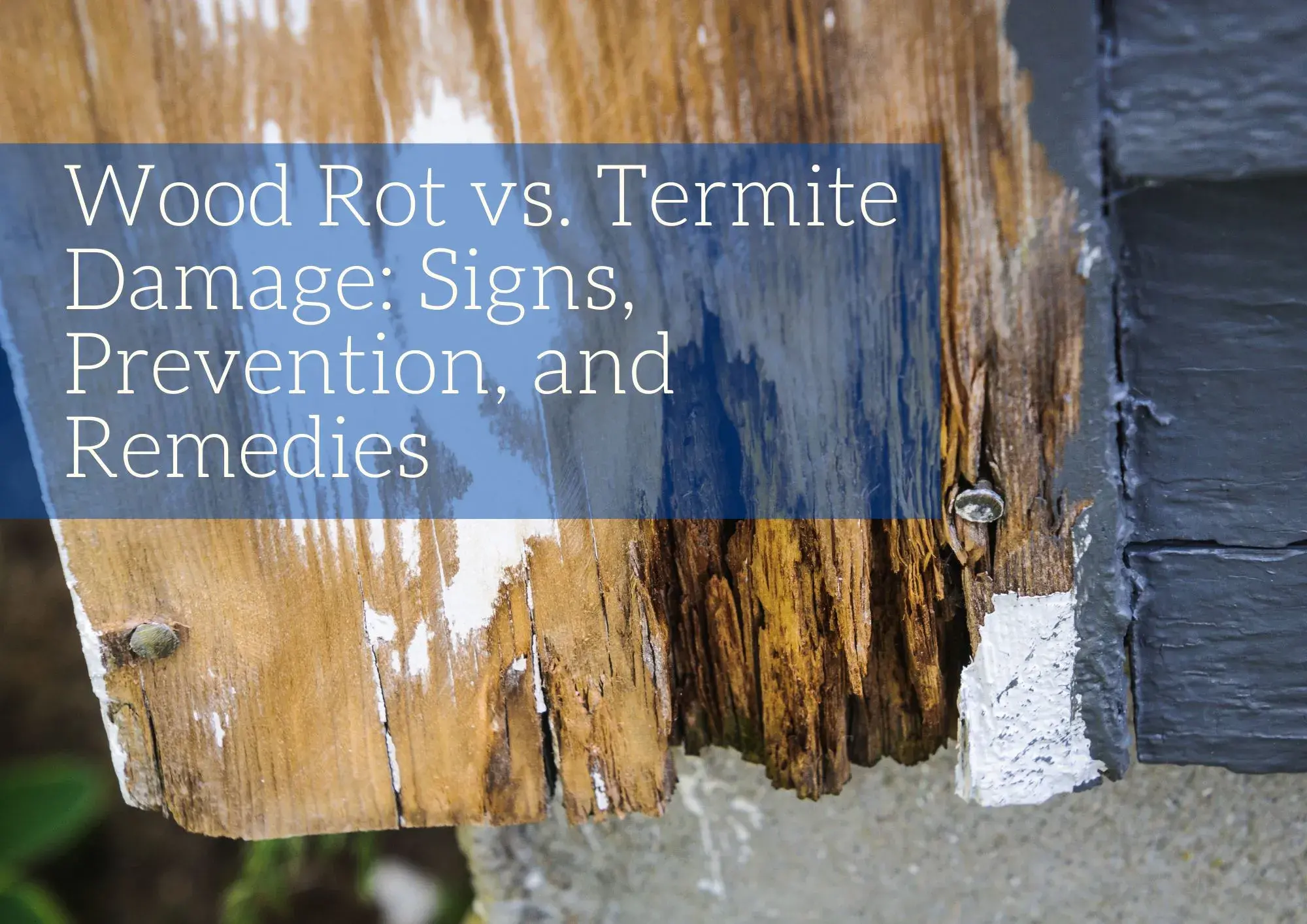In the world of home maintenance and repair, few concerns strike fear into the hearts of homeowners quite like the prospect of wood rot and termite damage. Both of these issues can wreak havoc on the structural integrity of your home, often going unnoticed until they become major problems. In this blog, we’ll explore the telltale signs that indicate their presence, discuss effective prevention strategies, and share remedies to help you protect your beloved home.
What Is Wood Rot?
Wood rot occurs when wood materials break down due to the growth of fungi or bacteria. It typically thrives in damp and humid areas, where moisture penetrates the wood, providing an ideal environment for these microorganisms to flourish. As the wood deteriorates, it loses its structural integrity, becomes discolored, and develops a musty odor. Left untreated, wood rot can compromise the strength and durability of wooden structures, making it a significant concern for homeowners, builders, and anyone working with wood-based materials.

Identifying Wood Rot
- Discoloration:Affected wood often changes color. It may become darker or develop gray, green, brown, or black patches. The specific color can vary depending on the type of fungi or bacteria involved.
- Softness and Sponginess: Rotted wood feels soft, spongy, or crumbly when you press it with your finger or a tool. Healthy wood should be firm and hard.
- Fungal Growth:You might notice the presence of fungal growth on the surface of the wood. This can appear as white, yellow, or mushroom-like structures, which may release spores.
- Musty Odor: Wood rot is often accompanied by a musty or mildew-like odor. This smell can be particularly strong in enclosed spaces.
- Cracks and Crevices: As wood deteriorates, it may develop cracks, splits, or fissures on its surface. These openings can provide entry points for moisture and exacerbate the rot.
- Peeling or Flaking: Paint or finish on the wood may start peeling or flaking off as the wood underneath decays.
Repair or Replace?
If you can easily fix the deteriorating wood, go for it. Just make sure to seal and protect the board to prevent future rot. This advice works well for window and door trim, fascia boards, decking, and other accessible wood.
But swapping out a board isn’t always straightforward. When dealing with rot in window or door sills, replacing the wood might seem like a big job, but it could be unnecessary if there’s enough good wood left. In such cases, it’s a good idea to remove as much of the compromised wood as possible by scraping, chopping, or sanding before you start restoring.
How to Prevent Wood Rot
- Control Moisture: The most critical step in preventing wood rot is controlling moisture. Keep wood surfaces dry and avoid prolonged exposure to rain or humidity.
- Regular Inspection: Routinely inspect wooden structures for signs of rot, especially in vulnerable areas like windows, doors, and roofing. Address any issues promptly to prevent further damage.
- Proper Ventilation: Ensure adequate ventilation in spaces that contain wood, such as attics and crawl spaces. Proper airflow helps to reduce moisture buildup.
- Use Treated Wood: Whenever possible, use pressure-treated or naturally rot-resistant wood for outdoor applications, like decks and fencing.
What Is Termite Damage?
Termite damage encompasses the destructive effects of these cellulose-loving insects on wooden structures and materials. Termites, equipped with specialized digestive systems, hollow out wood from the inside, causing structural damage. Signs of termite damage include hollowed wood, sagging floors and walls, discarded wings, mud tubes, blistered paint, and swarms of winged termites.
Signs of Termite Damage
- Mud Tubes: Look for narrow, pencil-sized mud tubes on the exterior walls, foundations, or wooden surfaces. Termites use these tubes as protective tunnels between their nests and food sources.
- Hollow-Sounding Wood: Tap or knock on wooden surfaces. If the wood sounds hollow or papery, it could indicate termite damage. Termites hollow out wood from the inside.
- Discarded Wings: After swarming, termites shed their wings. Look for small, translucent wings near window sills, doors, or light sources, especially during the spring and summer months when swarming is common.
- Small Holes or Cracks: Examine wooden surfaces for small holes or cracks that weren’t previously present. These can be entry points or exit holes created by termites.
- Blistered or Bubbling Paint: Termites can cause paint to blister or bubble as they tunnel beneath the surface of painted wood.
- Frass Accumulation: Check for the accumulation of tiny, pellet-like droppings known as frass near infested areas. Termites push these droppings out of their tunnels.
- Sagging Floors or Walls: Inspect floors and walls for signs of sagging or buckling, as weakened structural supports can result from a termite infestation.
- Swarms of Winged Termites: If you notice swarms of winged termites inside your home or near windows and doors, it’s a strong indicator of an active termite colony.
How to Tackle Termite Damage
If you find termite damage, it’s a good idea to reach out to a reputable pest control company like Terminix or Orkin. They’ll swing by to check out the damage and come up with a plan to fix it. These termite experts can easily distinguish between old and new termite damage and know just how to mend termite-ravaged wood to keep your home’s structure intact. Plus, they’ve got the skills, tools, and know-how to get rid of termites for good, so you won’t have to worry about dealing with this indefinitely.

How to Prevent Termite Damage
- Address and tackle moisture concerns proactively: It’s important to maintain a dry environment to prevent potential issues down the line. Take steps to waterproof and seal any exposed wood, fix leaks promptly, and don’t hesitate to address any water accumulation or pooling problems in your foundation or roof.
- Opt for high-quality lumber: When it comes to replacing or building with wood, opt for professionally-rated, top-notch lumber to ensure durability and longevity.
- Schedule annual check-ups with specialists: This is especially valuable if you reside in an area prone to wood-related issues. Specialists can conduct thorough inspections to spot any damage, identify high-risk areas, and offer preventive recommendations when necessary.
- Stay vigilant for signs: Being attentive is the best way to safeguard your home. Don’t ignore seemingly minor cracks, discoloration, or swelling for extended periods. You don’t need to be overly obsessive, but maintaining a watchful eye will help you catch any potential problems before they escalate into costly issues.

Understanding the key differences between wood rot and termite damage is essential for homeowners looking to protect their investments. While both can jeopardize the structural integrity of your property, identifying the signs and knowing how to prevent and address these issues can save you both time and money. Regular inspections, proactive maintenance, and the use of high-quality materials are your first lines of defense. Whether it’s wood rot or termite damage, early detection and swift action can help you maintain a safe and durable home for years to come. By staying informed and taking the necessary steps outlined in this blog, you can ensure that your property remains a solid and secure haven for you and your family.








